- 1MSc Decommissioning programme, University of Aberdeen, Aberdeen, United Kingdom
- 2The National Decommissioning Centre, University of Aberdeen, Newburgh, United Kingdom
- 3Aberdeen Business School, Robert Gordon University, Aberdeen, United Kingdom
- 4The School of Biological Sciences, University of Aberdeen, Aberdeen, United Kingdom
Man-made structures in the marine environment such as offshore Oil & Gas infrastructure are known to provide a hard substrate that enables ecosystems to develop on and around them. Current decommissioning practices on the UK Continental Shelf are mandated by the OSPAR Decision 98/3 with the premise of a clean seabed at its core, meaning that it is the expectation that all infrastructure is completely removed at the end of its operation life, leaving a clear seabed behind. This study critically reviewed 49 peer-reviewed articles relating to the ecosystem and the impact to these ecosystems by current removal practices. The results clearly demonstrate that current science-based evidence shows that existing O&G platform substructures act as multipurpose artificial reefs upon which rich ecosystems have developed and that their removal degrades the overall North Sea marine environment. Furthermore, this study shows that clear-sea bed policies, such as OSPAR 98/3, do not reflect, nor understand the complex relationship and interdependencies between biology and man-made structures and do not reflect current scientific knowledge. It is concluded that based on current knowledge, it is no longer scientifically justifiable to mandate the removal of all O&G infrastructure during decommissioning and that applying the principle of a clean seabed according to the OSPAR Commission should be re-considered.
1 Introduction
Offshore decommissioning regulations in the UK are controversial, as evidenced by a recent focus of scientific research programs investigating the impact of man-made structures (MMS) on the marine environment (Birchenough and Degraer, 2020). MMS are emplaced in the marine environment for a number of different purposes by a range of different industries and can include fixed and mobile Oil & Gas (O&G) installations and infrastructure, offshore wind farms (OWF), pipelines and cables, shipwrecks, and fish farms.
Recent research identifying the potential ecological benefits of MMS on the marine environment (Fowler et al., 2020), highlight environmental and political challenges of both decommissioning in situ and full removal (Sommer et al., 2019) and list gaps in our understanding and knowledge of MMS ecology (Dannheim et al., 2020; Fortune and Paterson, 2020). It is not the intention of this study to repeat this work, instead, a synopsis of the findings of each of the reviewed articles is presented, and key ecological criteria are identified from within these articles and a qualitative analysis is presented in a ‘traffic light system’.
This study focuses on decommissioning of offshore O&G infrastructure located on the UK Continental Shelf in the North Sea where according to OGUK, 2019 36 % of it is expected to be decommissioned and removed by 2028 (OGUK, 2019).
When the operator (owner of the infrastructure) decides to decommission they must seek permission from the UK government and as a requirement of that process an Environmental Impact Assessment (EIA) is required (Department for Business, Energy & Industrial Strategy, 2018). However, because of current policy, the EIAs do not consider the full impact of the removal of MMS on the marine environment (Fortune and Paterson, 2020) and that the clean seabed policy mandated by the OSPAR Decision 98/3 results in biased comparative assessments by not considering the full impact of decommissioning on the marine environment, nor a comprehensive range of decommissioning options, including decommissioning in situ.
1.1 Decommissioning in the UK
In 1998 the United Kingdom and Europe introduced the most stringent regional decommissioning framework worldwide (Fam et al., 2018). After the 1995 Brent Spar incident the OSPAR Decision 98/3 on the Disposal of Disused Offshore Installations (OSPAR Commission, 1998) became legally binding under the Petroleum Act 1998 as amended by the Energy Acts 2008 and 2016. It generally prohibits “dumping, and the leaving wholly or partly in place, of disused offshore installations within the maritime area” of the North Sea. Derogations, such as leaving footings or the complete installation in place, may be permitted by the competent authority of a Contracting Party only for the following types of structures:
● large steel installations weighing more than 10,000 tonnes, installed before 1999.
● gravity-based/floating concrete installations.
● damaged/deteriorated structures.
To qualify for derogation one of these cases must apply and an in-depth comparative assessment must be carried out to demonstrate that the disused O&G installation cannot be re-used, recycled or disposed on land. Currently, only 12 % of the O&G platforms located on the UKCS may qualify for derogation (Oil & Gas Authority, 2020a). All other platforms must be removed to ensure a clean seabed. It has been argued that rigs-to-reefs is a valid method of re-using existing material and creating artificial reefs, however, the OSPAR Guidelines on Artificial Reefs in relation to Living Marine Resources (OSPAR Commission, 2012) demand artificial reefs to be built from inert, virgin materials. Hence, the guidelines exclude any type of rigs-to-reefs model in the North Sea. An in-depth analysis (Jørgensen, 2012) of the development process of these guidelines indicated that the Contracting Parties originally intended to find suitable ways of using O&G installations as artificial reefs. However, due to the Brent Spar controversy, many of the Contracting Parties argued that the rigs-to-reefs alternative would be mistakenly considered as dumping at sea by the general public and the environmental NGOs (Jørgensen, 2012). Without consulting the scientific community all Contracting Parties except for Norway decided to ban rigs-to-reefs in the North Sea in order to avoid any further public debates and protests.
Following the long history of decommissioning in the U.S. Gulf of Mexico (Kaiser and Pulsipher, 2005), UK was the second country to enter the decommissioning market at scale (Wood, 2018). The North Sea Transition Authority (NSTA) (previously the Oil & Gas Authority (2020b)) estimate the overall decommissioning expenditure for the UKCS will be £44.5 billion, the cost of which will be met by the operators (60%) and the UK tax payers (40%) through tax relief (National Audit Office, 2019). These figures include various decommissioning activities but are dominated by well plug and abandonment (P&A) and the complete removal of the O&G installations (subsea, floating, and fixed structures).
According to Oil & Gas UK (OGUK, 2019) £15.2 billion is forecast to be spent on decommissioning in the North Sea over the next decade. Furthermore, OGUK calculates that approximately 20 % of these decommissioning costs will be used for the removal and onshore disposal of more than 100 platforms, topsides and substructures. Depending on the region the topsides removal may be marginally more expensive than substructure removal. This equates to an estimate of £1.4 billion to be spent over the next ten years; just for substructures’ decommissioning. In total, it will cost between £4 billion and £5 billion to fully remove the 306 substructures that are currently installed UKCS platforms (steel only) (OGUK, 2019).
1.2 Clean seabed or protection
The ecosystems of the North Sea have been significantly impacted by human activities such as fishing, environmental pollution, greenhouse gas (GHG) emissions, increase of sea temperature due to climate change, sand, oil and gas extraction as well as introduction of wind farms, shipwrecks and shipping (Halpern et al., 2008; Lindeboom et al., 2011). This altered ecosystem led some scientists (Schläppy and Hobbs, 2019; van Elden et al., 2019) to adopt the “novel” ecosystem approach, which acknowledges the functions and services of a new ecosystem that is formed by the presence of MMS. Some scientists argue that instead of hoping that the ecosystem will be restored to its ‘original’ environmental baseline without human intervention (Ounanian et al., 2019), we could start to accept the new state of the ecosystem and try to restore it pro-actively and appropriately (Macreadie et al., 2011; Fowler et al., 2018). Furthermore, the evidence for this ‘original’ environmental baseline is completely absent. Decommissioning in situ (leaving the platform substructure in place) can be seen as active marine restoration and an investment in the future to be evaluated on an unbiased case-by-case basis (Ekins et al., 2006; Fowler et al., 2014).
In the rigs-to-reefs model used in the U.S. Gulf of Mexico for example, 50 % of the savings made by reefing rather than full removal must be paid by the O&G operators to the artificial reef fund (Scarborough Bull and Love, 2019). Liability for the structure is transferred to the state, which is then responsible for maintenance and monitoring. This model could be adapted and incorporated into the Maximise Economic Recovery (MER) strategy as a life extension option of O&G installations in the North Sea (Falcone, 2020).
From a marine spatial planning perspective, one might argue that a clean seabed is the preferred choice to reopen the sea to other users such as fisheries. However, the 500 m safety zones around the 1350 O&G installations in the North Sea (OSPAR Commission, 2017) only represents a maximum of 0.1 % of the total North Sea area (Fowler et al., 2020), in comparison, the Marine Protected Areas (MPA) cover 18.6 % (OSPAR Commission, 2019b).
1.3 Marine protected areas
The main goals of both OSPAR and the EU are protection of key threatened and/or declining species and natural habitats, conservation and restoration of natural ecosystems and enhancement of biodiversity in the maritime area (OSPAR Commission, 2019a) and EU protected Reef Habitats (European Environment Agency, 2013). To secure these goals, Marine Protected Areas were established over the last two decades. O&G installations were historically awarded licenses in MPAs and therefore MMS exit in these areas. Supplementary Figure 1 illustrates all designated OSPAR MPAs (OSPAR Commission, 2019a) and EU protected Reef Habitats (European Environment Agency, 2013) in which UKCS platforms are located. Most of these MPAs were designated after the platforms’ installation and that is why currently more than 50 % of all UKCS platforms (152 in total) are located either in designated OSPAR MPAs or 1170-Reefs Habitats. No specific guidance is provided on how to address the challenge of decommissioning platforms located in these areas. Hence, 16 out of 21 platforms located in a MPA with “not in use” status have not yet been removed.
Some researchers have developed comprehensive decision-making tools for decommissioning the infrastructure in MPAs, for example Burdon et al. (2018) but all are based on full removal and therefore do not compare the other options such as decommissioning in situ.
1.4 Protected marine species and MMS
The cold-water coral Desmophyllum pertusum (previously named Lophelia pertusa and named as such in the 49 articles reviewed for this study but will be referred to as D. pertusum from here), is a protected and endangered marine species. It is found in many locations throughout the North East Atlantic region and although it may be a protected species, there is no legal requirement for it to be protected if it is found on an O&G MMS.
On both the Murchison (CNR International, 2013) and Ninian North (CNR International, 2016) platforms. D. pertusum colonies were found on the steel jackets, which was highlighted in the EIA. The Joint Nature Conservation Committee (JNCC), the public body that advises the government and is required to assess the EIAs as part of the statutory decommissioning regulations, advised that because the D. pertusum colonies would not have occurred without the presence of the platforms, the mortality of the protected cold-water coral because of decommissioning operations would not be considered as an issue of significant concern.
In the case of the decommissioning of the Brent Delta (Shell U.K. Limited, 2017) and Dunlin Alpha (Fairfield Energy Limited, 2019) platforms D. pertusum colonies were found on both and Arctica islandia (ocean quahog) was observed near Dunlin. The EIAs, however, concluded that it was not deemed necessary to take any measures to protect these rare and threatened species during the decommissioning.
In all these examples derogations were allowed, but the basis for these decisions were not due to species and thereby environmental protection.
1.5 Ecological benefits of MMS
According to Fabi (2015) artificial reefs are human built structures that actively enhance and/or recover natural habitats, raise productivity and manage marine resources and can serve many other purposes. In the North Sea an offshore artificial reef should achieve at least one of the following objectives: 1) provide new hard substrate for sessile invertebrates; 2) provide shelter for juvenile and mature motile invertebrates; 3) restore depleted habitats and mitigate habitat loss; 4) enable growth and reproduction of rare, threatened and commercially important species and habitats; 5) enhance biodiversity; 6) protect sensitive habitats from fishing activities; 7) create potential networks of MPAs to manage connectivity and species’ life cycle; 8) enable research and educational activities.
While demonstrating which of these objectives are generally met by an existing O&G reef, it is also important to identify any uncertainties and knowledge gaps. This will further help in concluding whether there is enough science-based evidence available to enable an unbiased comparative assessment of different options for decommissioning platform substructures. Based on Fowler et al. (2014), a distinction is made between the following in situ and full removal options for decommissioning:
● Full removal: transport complete substructure to shore and re-use or re-cycle.
● “Leaving intact”: remove topsides and leave complete substructure in place (add navigational aid).
● “Topping”: cut top section and either transport to shore or deploy next to structure (cutting depth requirement is the IMO free draught of minimum 25 m following the examination of Fowler, Jørgensen and Coolen et al. (2020) or 55 m following the Department for Business, Energy & Industrial Strategy guidelines).
● “Toppling”: topple whole structure in place.
Reefing of the structure in a designated area will not be discussed further in this study as no research data are available to evaluate this option in detail for the North Sea.
2 Evaluation methodology
In total, 49 peer-reviewed articles were examined in depth and the most important data were extracted, see Table 1. More than 50% of the research articles are from 2018 to 2020. A slight bias towards the Southern North Sea can be observed.The most comprehensive research review study conducted by Fowler et al. (2020) was further used as guidance for the qualitative critical-analysis. The study outlines five key ecological considerations when undertaking decommissioning assessments: 1) provision of reef habitat; 2) productivity of offshore ecosystems; 3) enhancement of biodiversity; 4) protection of the seabed from trawling; 5) enhancement of connectivity. The main criteria related to each of the ecological considerations were then used to qualitatively evaluate the literature findings. In addition, a colour-coded traffic light system was introduced to highlight the current state of knowledge:
● Green: Mature, science-based evidence is available. The findings are statistically significant and are confirmed by other studies.
● Gray: Immature early research studies and simulation-based evidence available. The results suggest a trend, but extensive validation is lacking.
● Red: No science-based evidence available.
For the final presentation of the evaluation results the average of the knowledge status of the respective criteria related to the five key consideration was determined by reflecting this in the colour and its brightness. The stronger the green colour, the more mature, science-based evidence is available. The lighter the green colour, the less science-based evidence is available. If the criteria is marked as green, the current research knowledge status can be considered as mostly mature, science-based evidence. However, if the criteria are marked as gray, only immature research is available. If a criterion is red, then no science-based evidence is available. The red brightness scale is to be interpreted inverted to the green scale.
3 Results
More than 50 % of the research studies examined in depth were conducted between 2018 and 2020. This strong interest is due to the fact that environmental scientists identified a potential ecological value in leaving O&G structures partly or fully in place (Fowler et al., 2018; Fortune and Paterson, 2020). That is why it is important to understand the current knowledge status and highlight the remaining knowledge gaps before the O&G structures are finally removed (OGUK, 2019). Time is pressing and changing regulatory frameworks and legislation takes a while as seen in the past in California (Scarborough Bull and Love, 2019). It can take 10 years until the research work is completed (see INSITE Programme – Phase 2), all stakeholders involved are coordinated (Shaw et al., 2018; Tung, 2020) and finally the political consensus to update OSPAR Decision 98/3 was found. Past experience has shown that aligning the OSPAR Parties could be the especially difficult (Jørgensen, 2012). However, many research initiatives gained considerable momentum worldwide (McLean et al., 2020), therefore further research should be supported and access granted to the not yet freely accessible but available extensive environmental data (Macreadie et al., 2018; Murray et al., 2018) in order to close the remaining knowledge gaps.
In the next sections the traffic light rating results of the current knowledge status are presented, organised by the ecological considerations identified by Fowler et al. (2020): 3.1) provision of reef habitat; 3.2) productivity of offshore ecosystems; 3.3) enhancement of biodiversity; 3.4) protection of the seabed from trawling; 3.5) enhancement of connectivity.
3.1 Provision of reef habitat
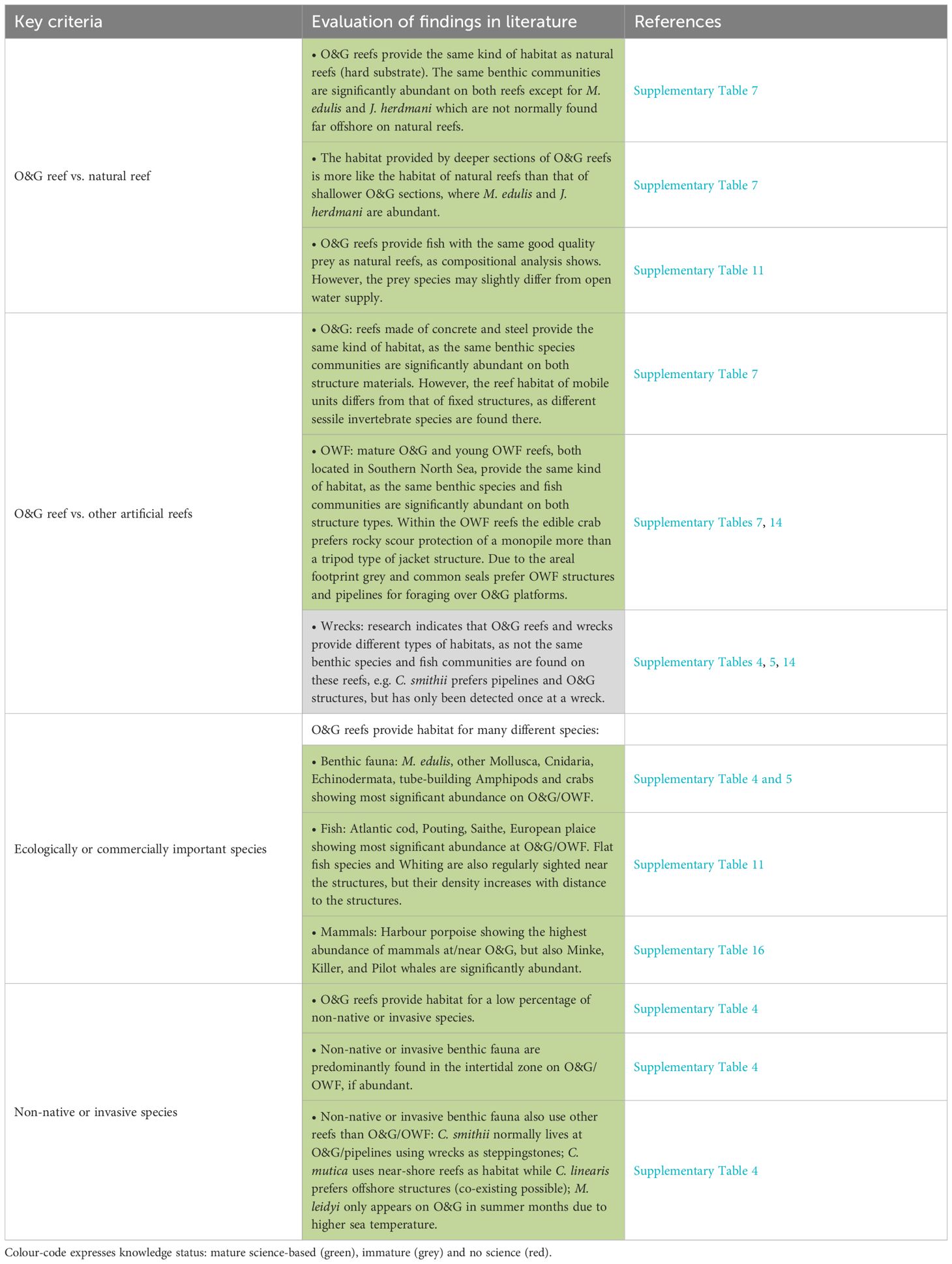
Table 2 Provision of reef habitat (part 1): Qualitative analysis of recent research findings on the impact of man-made structures against this key ecological consideration and its main criteria (Fowler et al., 2020).
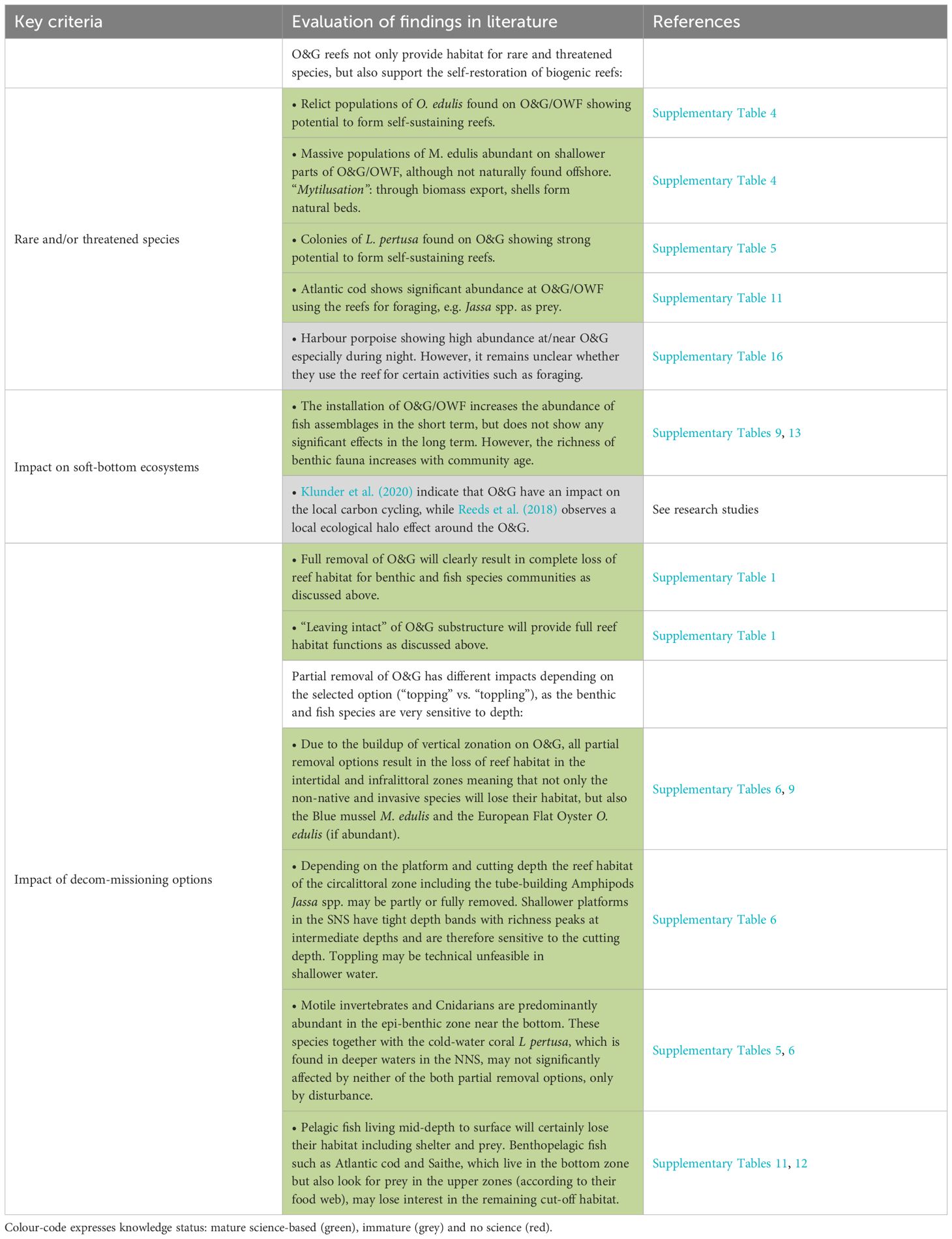
Table 3 Provision of reef habitat (part 2): Qualitative analysis of recent research findings on the impact of man-made structures against this key ecological consideration and its main criteria (Fowler et al., 2020).
3.2 Productivity of offshore ecosystems
Refer to Table 4.
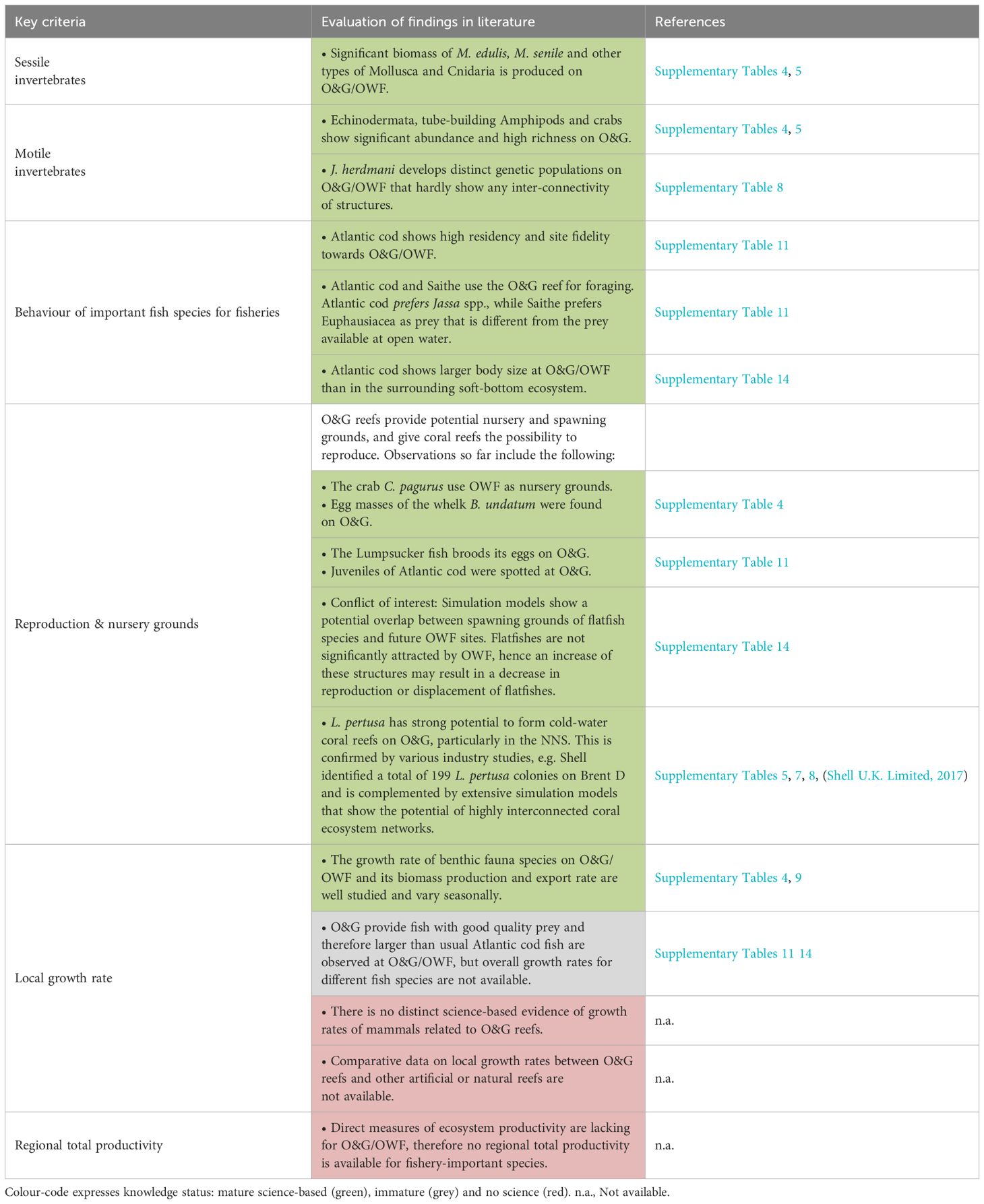
Table 4 Productivity of offshore ecosystems: Qualitative analysis of recent research findings on the impact of man-made structures against this key ecological consideration and its main criteria (Fowler et al., 2020).
3.3 Enhancement of biodiversity
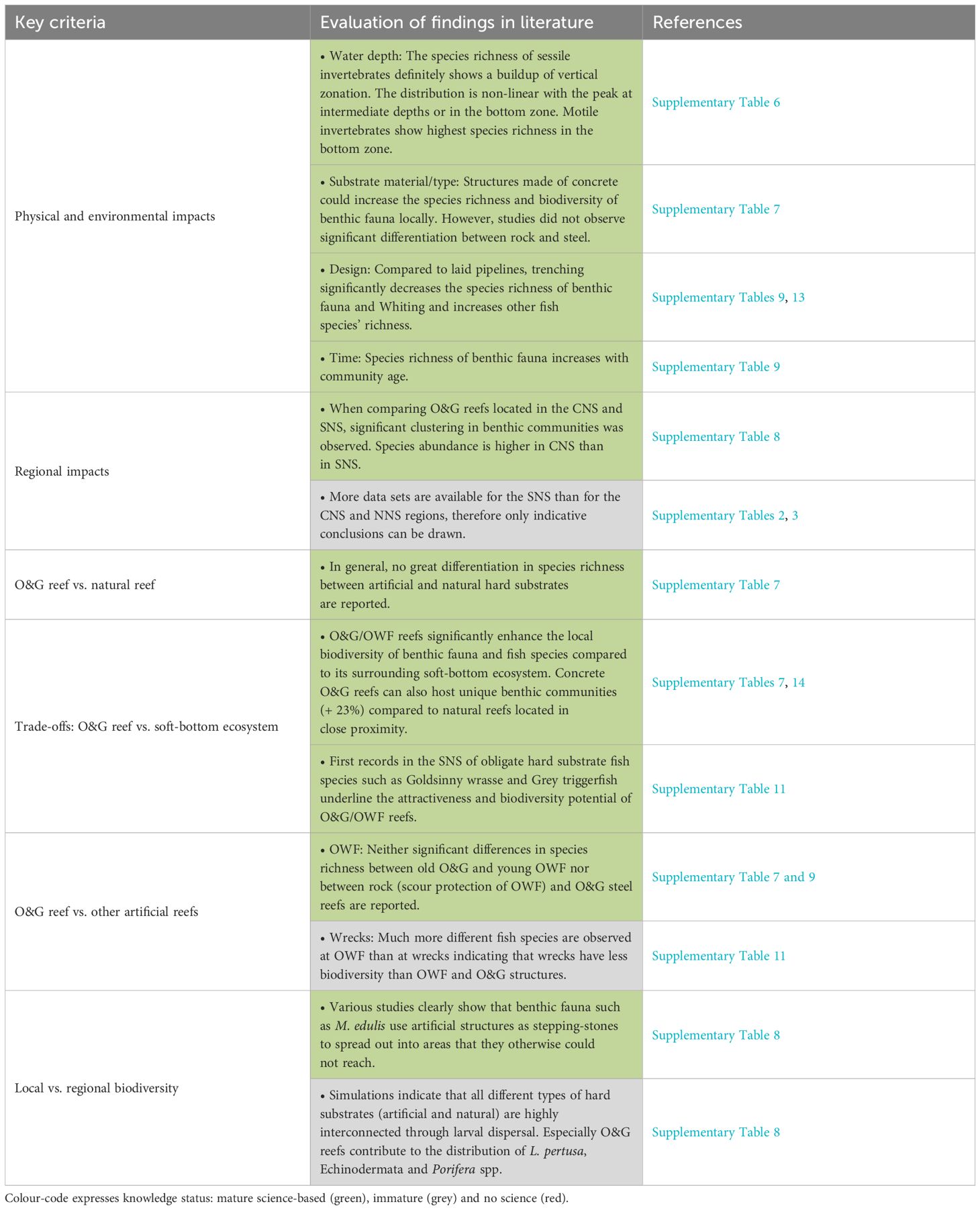
Table 5 Enhancement of biodiversity (part 1): Qualitative analysis of recent research findings on the impact of man-made structures against this key ecological consideration and its main criteria (Fowler et al., 2020).
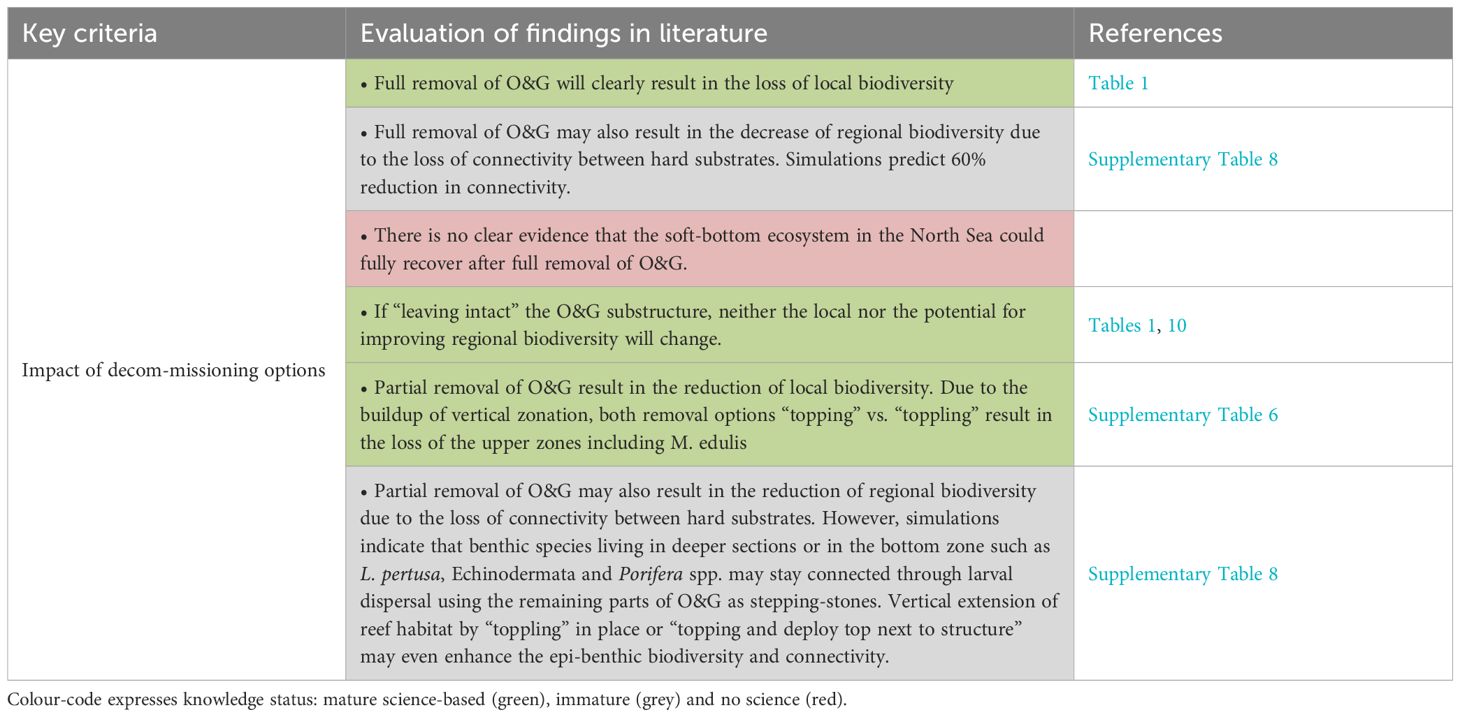
Table 6 Enhancement of biodiversity (part 2): Qualitative analysis of recent research findings on the impact of man-made structures against this key ecological consideration and its main criteria (Fowler et al., 2020).
3.4 Enhancement of connectivity
Refer to Table 7.
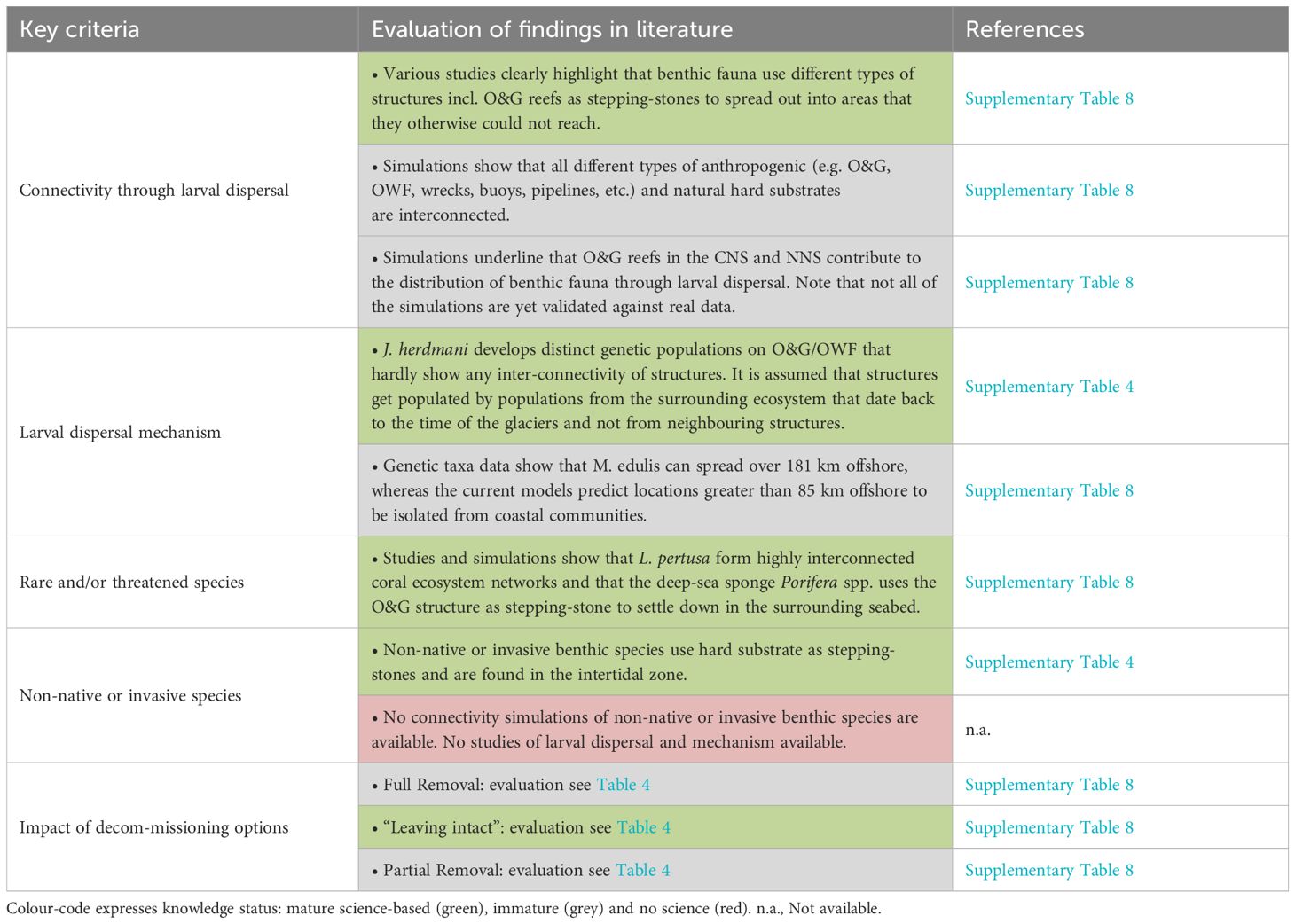
Table 7 Enhancement of connectivity: Qualitative analysis of recent research findings on the impact of man-made structures against this key ecological consideration and its main criteria (Fowler et al., 2020).
3.5 Protection of the seabed from trawling
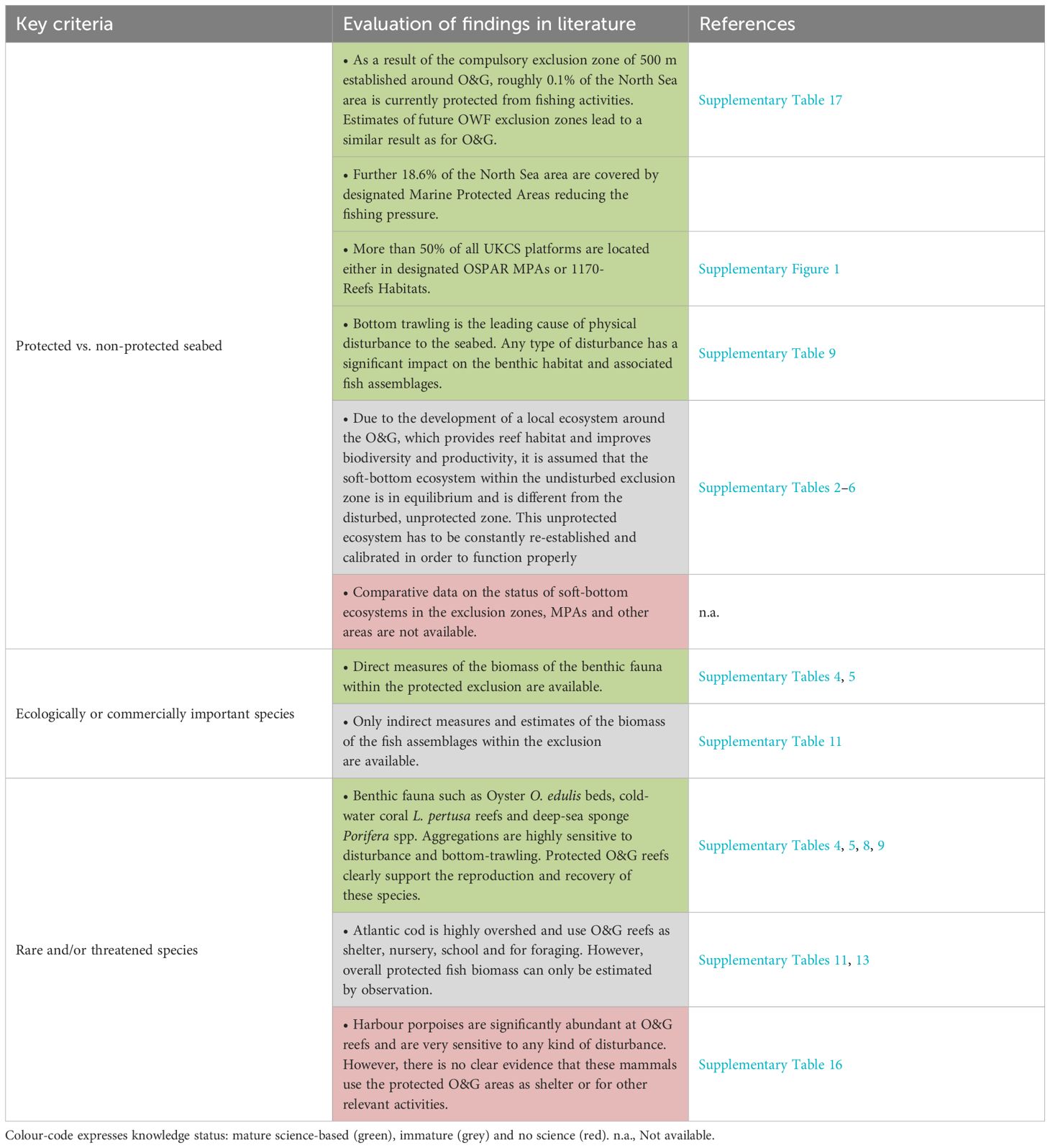
Table 8 Protection from trawling (part 1): Qualitative analysis of recent research findings on the impact of man-made structures against this key ecological consideration and its main criteria (Fowler et al., 2020).
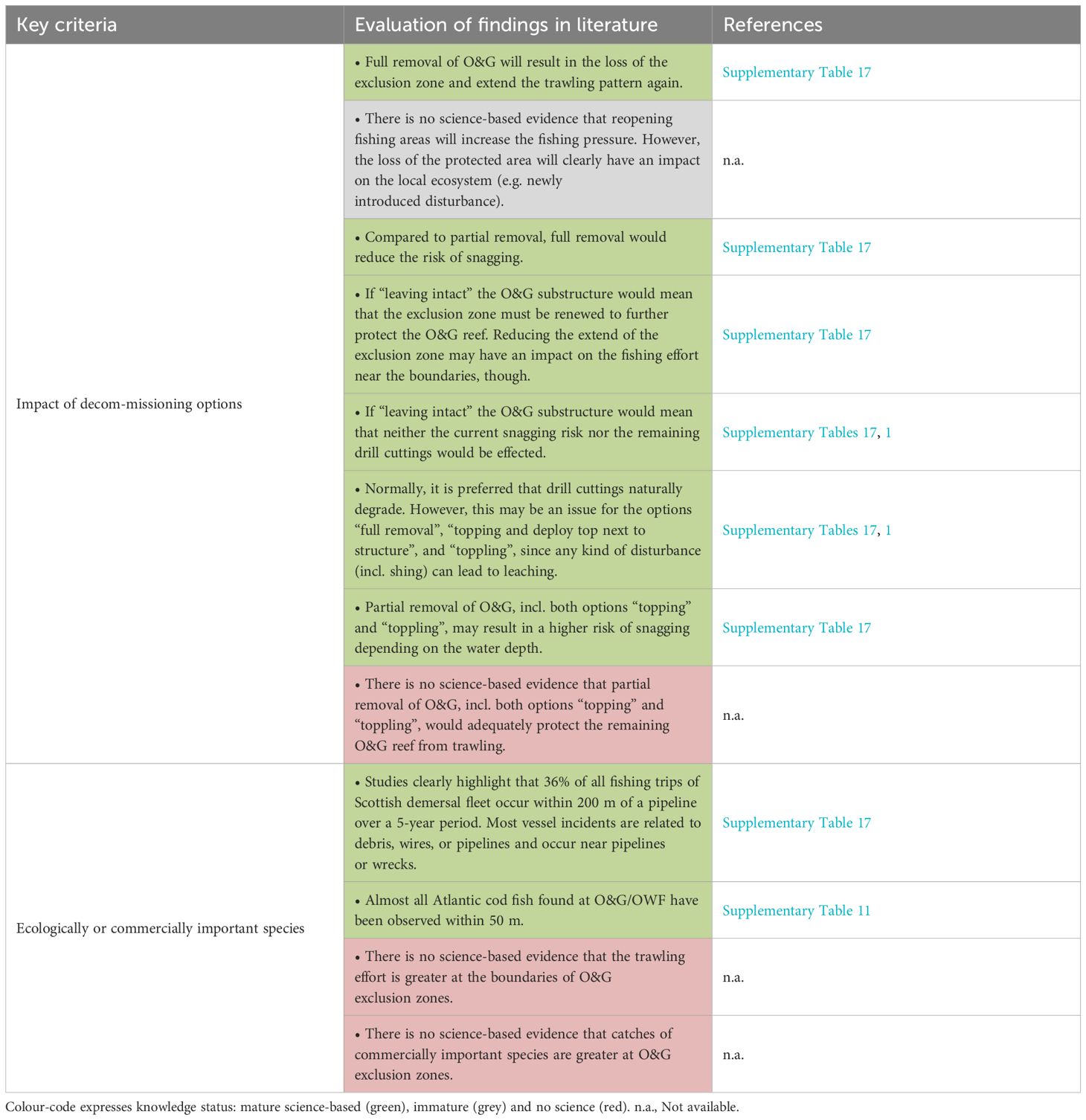
Table 9 Protection from trawling (part 2): Qualitative analysis of recent research findings on the impact of man-made structures against this key ecological consideration and its main criteria (Fowler et al., 2020).
3.6 Traffic light rating of qualitative analysis
Table 10 presents the traffic light rating results of the qualitative analysis. As the evaluation results highlight, the traffic lights for the key ecological considerations are predominantly showing green. This means that in general the current research knowledge status can be considered as mostly mature, science-based evidence. In detail, it can be seen that more mature, science-based evidence is available for proving that O&G reefs provide reef habitat and enhance biodiversity. Less mature science-based evidence is available for showing that O&G reefs protect the seabed from trawling, enhance the inter-connectivity of hard substrate for larval dispersal, and are productive offshore ecosystems.
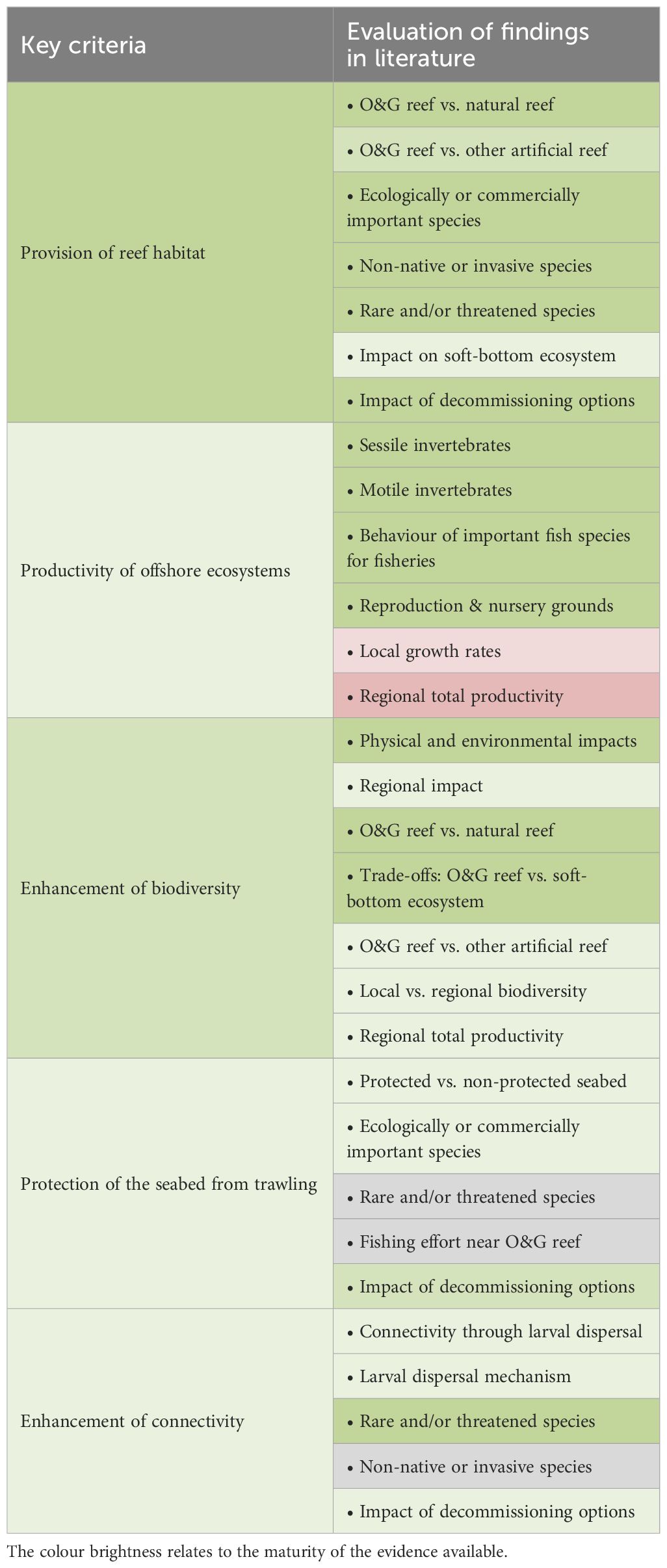
Table 10 Colour-coded illustration of the qualitative analysis: traffic light rating of the current knowledge status – mature science-based (green), immature (grey) and no science-based (red) – with regards to the key ecological considerations (Fowler et al., 2020).
When examining the main criteria related to the key ecological considerations, it can be seen that not all of them are highlighted in green and the knowledge gaps have been identified and are discussed as follows.
Only immature research data was available to assess the effectiveness of protecting rare and/or threatened species from trawling. It is evident that benthic fauna species and habitats such as European Flat Oyster O. edulis beds (Kerckhof et al., 2018), cold-water coral D. pertusum (L. pertusa) reefs (Bergmark and Jørgensen, 2014; Henry et al., 2018) and deep-sea sponge Porifera spp. (Gates et al., 2019; Vad et al., 2020) aggregations are actively protected by the O&G reef from trawling, however, it is not evident if certain fish species or marine mammals are effectively protected from trawling. Furthermore, only immature research data are available to determine the fishing results near the O&G reefs at the boundaries of the exclusion zones (Reubens et al., 2013; Rouse et al., 2020).
It is evident that non-native or invasive species use hard substrate such as O&G reefs as stepping-stones (Coolen et al., 2016, 2018, 2020) to disperse. However, the exact larval dispersal mechanism and the extent to which O&G reefs contribute to their inter-connectivity has not yet been determined.
Due to the complexity, growth rates, especially of mobile species in connection with O&G reefs, are difficult to measure and are therefore lacking. For this reason, the overall productivity of O&G reefs and thus their impact cannot be determined on a regional basis.
The qualitative analysis shows that the knowledge status on the impact of MMS on the marine environment can be considered as mostly mature, science-based evidence, however, some knowledge gaps have been identified. In order to determine if the current knowledge status is sufficient to conduct an unbiased comparative assessment and decide whether to remove or not to remove the O&G structures, the main evaluation criteria need to be critically assessed (Martins et al., 2020). For example, are all criteria relevant generally or do they need to be adapted on a case by case basis? Do all identified knowledge gaps need to be closed before conducting a comparative assessment? These questions should be answered by stakeholder collaboration (Tung, 2020) and an integrated scientific team as suggested by Shaw et al. (2018) in order to avoid a Brent Spar 2.0 (Side, 1997). Meanwhile, Fowler et al. (2020) recommend temporarily suspension of the mandatory removal of the O&G structures. The decommissioning community is currently undergoing a paradigm shift and until now, the knowledge gaps mandated the precautionary principle (OSPAR Commission, 1992) of full removal. However, scientific evidence may soon be available that will allow assessments on a case by case basis, so that the application of the precautionary principle will become obsolete.
3.7 Main features of O&G reefs
Tables 2, 3 clearly demonstrate that O&G reefs provide the same excellent reef habitat for benthic fauna, fish and marine mammals as natural and other artificial reefs. However, it should be noted that they also provide habitat to species that are not normally found far offshore, such as M. edulis and J. herdmani. Furthermore, rare and/or threatened species such as the cold-water coral D. pertusum colonise O&G reefs and the overfished Atlantic cod resides there.
Table 4 shows that O&G reefs significantly produce biomass of sessile and motile invertebrates and larger body sizes of Atlantic cods have been observed. Furthermore, O&G reefs serve as reproduction and nursery grounds especially for the edible crab, but also for rarer species such as the whelk B. undatum and the lumpsucker fish. A total of 199 D. pertusum colonies have been identified on Brent D in 2008 (Shell U.K. Limited, 2017), 30 years after start-up. Only the total productivity of mobile species at a local and regional level has not yet been determined.
Tables 5–7 highlight that not only is the local biodiversity significantly increased by O&G reefs, but also that regional biodiversity can be enhanced. This is achieved by inter-connectivity of hard substrates through larval dispersion. The physical parameter that most affects biodiversity is water depth. The material and type of substrate seem to play a less important role when it comes to species abundance and richness.
Tables 8, 9 present that especially rare and/or threatened benthic fauna species colonising a O&G reef are actively and effectively protected from trawling. Since bottom trawling is the number one cause of physical disturbance to the seabed, it is expected that each exclusion zone, although very small compared to the entire North Sea, will help protect valuable ecosystems (Fowler et al., 2018).
In conclusion, the study clearly demonstrates that O&G reefs act as artificial reefs according to the definition of Fabi (2015).
3.8 O&G reefs to be protected?
Tables 3, 6 and 9 highlight that different decommissioning options will have different impacts on the O&G reef habitat and fisheries.
While full removal will result in the complete loss of reef habitat, the “leaving intact” option will provide the full reef habitat. Depending on the partial removal option, cutting and platform depth, certain species communities will lose their habitat and some others may gain new extended habitat (Sammarco et al., 2014). This should be assessed on a case-by-case basis.
However, it remains unclear whether scientists would agree that O&G reefs should be protected because they provide full artificial reef services. Ounanian et al. (2019) introduced the “human-made oasis” metaphor for O&G reefs. Hard substrate supports life, but it is also uncommon in most parts of the North Sea. Scientists from JNCC (CNR International, 2016) argue that D. pertusum would have not colonised the Ninian Northen Platform if the structure had not been installed and therefore, removing the structure and destroying the species would not be considered as an issue. This is partly supported by scientists interviewed by Fowler et al. (2018) who stated that it is ethically acceptable to destroy such species because they say this hard substrate does not belong there. Where and how much hard substrate there was before trawling began in the NS is unknown, so there is no way to understand where hard substrate ‘should be’. On the other hand, the same scientists (Fowler et al., 2018) also argue that O&G structures should not automatically be removed; showing that some in the science community are making decisions and providing policy advice without understanding the entire picture. Many authors and some NGOs, including van Elden et al. (2019) and Schläppy and Hobbs (2019), now argue that O&G reefs could be valued as novel ecosystems.
4 Discussion
The results show that the majority of the key ecological criteria to determine the impact of MMS on the marine environment are green in the traffic light system, meaning that in general the current research knowledge status can be considered as mostly mature, science-based evidence and that existing O&G platform substructures can and do act as multipurpose artificial reefs.
The results presented demonstrate that the current knowledge about the impact of manmade structures on the marine environment is mature enough to show that it is no longer justifiable to mandatory remove all O&G platform substructures without proper assessment of each of the five ecological considerations as described here and in Fowler et al. (2020).
Furthermore, to ensure that an unbiased comparative assessment is conducted, it is vital that the five key criteria are included and are critically assessed so that the results are used to determine the best decommissioning option, including the decision about whether to remove O&G structures or to leave them in situ.
For example, are all criteria generally relevant or do they need to be adapted on a case by case basis? Do all identified knowledge gaps need to be closed before conducting a comparative assessment? These questions can only be addressed in an iterative process and full stakeholder collaboration (Tung, 2020). The Brent Spar experience (Side, 1997) has demonstrated that only a transparent assessment method (Martins et al., 2020) and sound decision criteria (Fowler et al., 2020) can lead to success. To deal with this it is recommended to set up an integrated scientific team as suggested by Shaw et al. (2018) and a survey similar to Fowler et al. (2018) could be conducted with all stakeholders involved. This would help to find common ground and define team goals rather than individual discipline goals.
Some limitations within the study come from the limited number and type of research available, with benthic fauna dominating the research and a bias towards the Southern North Sea. The main knowledge gaps are identified (grey and red colour) in the traffic light system and are in relation to the following key criteria; 2) protection of the seabed from trawling, 4) enhancement of connectivity, and 5) productivity of offshore ecosystems and are in some part due to the complexities of these studies as well as a lack of available data. In future, new tools such as eDNA (Harper et al., 2020) could facilitate and improve the research work. Meanwhile, data gaps could be mitigated by granting access to the large number of not yet published industry monitoring data (Macreadie et al., 2018; Murray et al., 2018). In particular, monitoring data of the derogation cases, where the footings were left in situ such as the Ninian Northern platform (CNR International, 2016) and the Murchison platform (CNR International, 2013), would give some insight into the short-term and long-term effects on the habitat provision. Any changes to the benthic fauna and the behaviour of fish and marine mammals at the remaining O&G reef could be determined. This information could also be used to investigate knowledge gaps related to partial removal impacts. For example, what is the impact on the local and regional biodiversity including the surrounding soft-bottom ecosystem? How is the fishing effort near the O&G reefs? And does the remaining O&G reef provide protection from trawling?
Finally, It should be highlighted that other environmental considerations, especially GHG emissions from decommissioning operations (Davies and Hastings, 2023a, 2023) and hence compliance to net zero (Oil & Gas Authority, 2020a) need to also be evaluated when conducting a comparative assessment of various decommissioning options. In this respect, it is worth examining how other countries are dealing with this issue (Scarborough Bull and Love, 2019).
5 Conclusions and policy implications
This study demonstrates that a new clearly structured regulatory framework with clear environmental objectives based on scientific evidence is required for future decommissioning of O&G industry infrastructure in the UK North Sea. This new framework should also include specific expectations of decommissioning within MPAs and if endangered, protected or endangered species are present.
This review concludes that the current research knowledge status of the impact of MMS on the marine environment can be considered as mostly mature, science-based evidence. Evidence that shows that existing O&G platform substructures can and do act as multipurpose artificial reefs and that a clear sea-bed policy is no longer justifiable in the UK North Sea.
The results show that an unbiased comparative assessment using the five key criteria should be undertaken for each decommissioning program, on case-by-case basis, and that decommissioning in situ should be considered within these comparative assessments.
The study clearly shows that the precautionary principle of OSPAR 98/3 (OSPAR Commission, 1992) should be reversed.
Finally, the study postulates that adherence to the current version of the OSPAR Decision 98/3 is driven by politics and not by marine environmental sciences.
Author contributions
NP: Conceptualization, Data curation, Formal analysis, Investigation, Methodology, Software, Writing – original draft, Writing – review & editing. AD: Methodology, Project administration, Resources, Validation, Writing – review & editing. AH: Supervision, Validation, Writing – review & editing.
Funding
The author(s) declare financial support was received for the research, authorship, and/or publication of this article. This research is funded by the UK Net Zero Technology Centre (NZTC) and the University of Aberdeen, through their partnership in the UK National Decommissioning Centre (NDC) through a PhD Scholarship for AD. AH was funded by two UKRI funded projects: the NERC funded FAB-GGR project (NE/P01995/1) and the EPSRC funded UKERC-4 project (EP/S029575/1). The NDC funded this publication.
Conflict of interest
The authors declare that the research was conducted in the absence of any commercial or financial relationships that could be construed as a potential conflict of interest.
Publisher’s note
All claims expressed in this article are solely those of the authors and do not necessarily represent those of their affiliated organizations, or those of the publisher, the editors and the reviewers. Any product that may be evaluated in this article, or claim that may be made by its manufacturer, is not guaranteed or endorsed by the publisher.
Supplementary material
The Supplementary Material for this article can be found online at: https://www.frontiersin.org/articles/10.3389/fmars.2024.1264892/full#supplementary-material
References
Bergmark P., Jørgensen D. (2014). Lophelia pertusa conservation in the North Sea using obsolete offshore structures as artificial reefs. Mar. Ecol. Prog. Ser. (Inter-Research Sci. Center) 516, 275–280. doi: 10.3354/meps10997
Birchenough S. N.R., Degraer S. (2020). Science in support of ecologically sound decommissioning strategies for offshore man-made structures: taking stock of current knowledge and considering future challenges. Edited by Howard Browman. ICES J. Mar. Sci. 77, 1075–1078. doi: 10.1093/icesjms/fsaa039
Burdon D., Barnard S., Boyes S. J., Elliott M. (2018). Oil and gas infrastructure decommissioning in marine protected areas: System complexity, analysis and challenges. Mar. pollut. Bull. (Elsevier BV) 135, 739–758. doi: 10.1016/j.marpolbul.2018.07.077
CNR International (2013). Murchison Facilities Decommissioning Environmental Statement (Aberdeen, United Kingdom: CNR International provided by BMT Cordah Ltd.). Tech. rep., (320 pp.).
CNR International (2016). Ninian Northern Platform EIA Scoping Report (Aberdeen, United Kingdom: CNR International provided by BMT Cordah Ltd.). Tech. rep., (63 pp.).
Coolen J. W.P., Bittner O., Driessen F. M.F., van Dongen U., Siahaya M. S., de Groot W., et al. (2020). Ecological implications of removing a concrete gas platform in the North Sea. Journal of Sea Research. 166, 101968. doi: 10.1101/2020.04.16.044263
Coolen J. W.P., Lengkeek W., Degraer S., Kerckhof F., Kirkwood R., Lindeboom H. (2016). Distribution of the invasive Caprella mutica Schurin 1935 and native Caprella linearis (Linnaeus 1767) on artificial hard substrates in the North Sea: separation by habitat. Aquat. Invasions 11, 437–449. doi: 10.3391/ai.2016.11.4.08
Coolen J. W.P., van der Weide B. E., Cuperus J., Blomberg M., Van Moorsel G. W.N.M., Faasse M. A., et al. (2018). Benthic biodiversity on old platforms, young wind farms, and rocky reefs. Edited by Joanna Norkko. ICES J. Mar. Sci. 77, 1250–1265. doi: 10.1093/icesjms/fsy092
Dannheim J., Bergström L., Birchenough S. N.R., Brzana R., Boon A. R., Coolen J. W.P., et al. (2020). Benthic effects of offshore renewables: identification of knowledge gaps and urgently needed research. ICES J. Mar. Sci. 77, 1092–1108. doi: 10.1093/icesjms/fsz018
Davies A. J., Hastings A. (2023a). Greenhouse gas emissions from decommissioning manmade structures in the marine environment; current trends and implications for the future. J. Mar. Sci. Eng. 11, 1133. doi: 10.3390/jmse11061133
Davies A. J., Hastings A. (2023b). A first estimate of blue carbon associated wth oil & gas infrstructure. Environ. Sci.: Adv. 12, 1708–1726. doi: 10.1039/D3VA00204G
Department for Business, Energy & Industrial Strategy (2018). Decommissioning of Offshore Oil and Gas Installations and Pipelines (London, United Kingdom: UK Government), 137 pp.
Ekins P., Vanner R., Firebrace J. (2006). Decommissioning of offshore oil and gas facilities: A comparative assessment of different scenarios. J. Environ. Manage. 79, 420–438. doi: 10.1016/j.jenvman.2005.08.023
European Environment Agency (2013). Conservation status of habitat types and species (Article 17, Habitats Directive 92/43/EEC) - Annex I habitat distribution filtered for Reefs, (1170). Available online at: https://www.eea.europa.eu/data-and-maps/data/article-17-database-habitats-directive-92-43-eec-1.
Fabi G. (2015). Practical guidelines for the use of artificial reefs in the Mediterranean and the Black Sea (Rome, Italy: Food and Agriculture Organization of the United Nations).
Fairfield Energy Limited (2019). Dunlin Alpha Substructure Decommissioning Environmental Appraisal Report (Aberdeen, United Kingdom: Fairfield Energy Limited provided by Xodus). Tech. rep., (176 pp.).
Falcone G. (2020). Can the offshore energy sector be transformed to help the UK become a net-zero nation? Sci. Parliament 76, 16–20.
Fam M. L., Konovessis D., Ong L. S., Tan H. K. (2018). A review of offshore decommissioning regulations in five countries – Strengths and weaknesses. Ocean Eng. (Elsevier BV) 160, 244–263. doi: 10.1016/j.oceaneng.2018.04.001
Fortune I. S., Paterson D. M. (2020). Ecological best practice in decommissioning: a review of scientific research. ICES J. Mar. Sci. 77, 1079–1091. doi: 10.1093/icesjms/fsy130
Fowler A. M., Jørgensen A.-M., Coolen J. W. P., Jones D. O. B., Svendsen J. C., Brabant R., et al. (2020). The ecology of infrastructure decommissioning in the North Sea: what we need to know and how to achieve it. ICES J. Mar. Sci. 77, 1109–1126. doi: 10.1093/icesjms/fsz143
Fowler A. M., Jørgensen A.-M., Svendsen J. C., Macreadie P. I., Jones D. O.B., Boon A. R., et al. (2018). Environmental benefits of leaving offshore infrastructure in the ocean. Front. Ecol. Environ. 16, 571–578. doi: 10.1002/fee.1827
Fowler A. M., Macreadie P. I., Jones D. O. B., Booth D. J. (2014). A multi-criteria decision approach to decommissioning of offshore oil and gas infrastructure. Ocean Coast. Manage. 87, 20–29. doi: 10.1016/j.ocecoaman.2013.10.019
Gates A. R., Horton T., Serpell-Stevens A., Chandler C., Grange L. J., Robert K., et al. (2019). Ecological role of an offshore industry artificial structure. Front. Mar. Sci. 6. doi: 10.3389/fmars.2019.00675
Halpern B. S., Walbridge S., Selkoe K. A., Kappel C. V., Micheli F., D'Agrosa C., et al. (2008). A global map of human impact on marine ecosystems. Science 319, 948–952. doi: 10.1126/science.1149345
Harper K. J., Goodwin K. D., Harper L. R., LaCasella E. L., Frey A., Dutton P. H. (2020). Finding crush: environmental DNA analysis as a tool for tracking the green sea turtle chelonia mydas in a marine estuary. Front. Mar. Sci. 6. doi: 10.3389/fmars.2019.00810
Henry L.-A., Mayorga-Adame C. G., Fox A. D., Polton J. A., Ferris J. S., McLellan F., et al. (2018). Ocean sprawl facilitates dispersal and connectivity of protected species. Sci. Rep. 8. doi: 10.1038/s41598-018-29575-4
Jørgensen D. (2012). OSPAR's exclusion of rigs-to-reefs in the North Sea. Ocean Coast. Manage. 58, 57–61. doi: 10.1016/j.ocecoaman.2011.12.012
Kaiser M. J., Pulsipher A. G. (2005). Rigs-to-reef programs in the gulf of Mexico. Ocean Dev. Int. Law 36, 119–134. doi: 10.1080/00908320590943990
Kerckhof F., Coolen J. W.P., Rumes B., Degraer S. (2018). Recent findings of wild European flat oysters Ostrea edulis (Linnaeus 1758) in Belgian and Dutch offshore waters: new perspectives for offshore oyster reef restoration in the southern North Sea. Belgian J. Zool. 148, 79–89. doi: 10.26496/bjz.2018.16
Klunder L., Lavaleye M. S., Filippidi A., Van Bleijswijk J. D., Reichart G. J., Van Der Veer H. W., et al. (2020). Impact of an artificial structure on the benthic community composition in the southern North Sea: assessed by a morphological and molecular approach. ICES Journal of Marine Science. 77 (3), 1167–1177. doi: 10.1093/icesjms/fsy114
Lindeboom H. J., Kouwenhoven H. J., Bergman M. J. N., Bouma S., Brasseur S., Daan R., et al. (2011). Short-term ecological effects of an offshore wind farm in the Dutch coastal zone; a compilation. Environ. Res. Lett. (IOP Publishing) 6, 35101. doi: 10.1088/1748-9326/6/3/035101
Macreadie P. I., Fowler A. M., Booth D. J. (2011). Rigs-to-reefs: will the deep sea benefit from artificial habitat? Front. Ecol. Environ. 9, 455–461. doi: 10.1890/100112
Macreadie P. I., McLean D. L., Thomson P. G., Partridge J. C., Jones D. O.B., Gates A. R., et al. (2018). Eyes in the sea: Unlocking the mysteries of the ocean using industrial, remotely operated vehicles (ROVs). Sci. Total Environ. 634, 1077–1091. doi: 10.1016/j.scitotenv.2018.04.049
Martins I. D., Moraes F. F., Távora G., Soares H. L. F., Infante C. E., Arruda E. F., et al. (2020). A review of the multicriteria decision analysis applied to oil and gas decommissioning problems. Ocean Coast. Manage. 184, 105000. doi: 10.1016/j.ocecoaman.2019.105000
McLean D. L., Bond T., Partridge J. C., Rouse S., Love M. (2020). The impact of oil and gas infrastructure in marine ecosystems: a global vision for informing decommissioning decisions. APPEA J. 60, 476. doi: 10.1071/AJ19153
Murray F., Needham K., Gormley K., Rouse S., Coolen J. W.P., Billett D., et al. (2018). Data challenges and opportunities for environmental management of North Sea oil and gas decommissioning in an era of blue growth. Mar. Policy 97, 130–138. doi: 10.1016/j.marpol.2018.05.021
National Audit Office (2019). Oil and gas in the UK – offshore decommissioning (London, United Kingdom: Department for Business, Energy & Industrial Strategy, HM Revenue & Customs, HM Treasury provided by the Comptroller and Auditor General). Tech. rep., (34 pp.).
OGUK (2019). Decommissioning Insight 2019 (London, United Kingdom: The UK Oil and Gas Industry Association Limited), 68 pp.
Oil & Gas Authority (2020a). Oil and Gas infrastructure - Surface. Available online at: https://data.ogauthority.co.uk/arcgis/rest/services/OGA_Public_WGS84/OGA_Infrastructure_WGS84/FeatureServer (Accessed 30 October 2020).
Oil & Gas Authority (2020b). UKCS Decommissioning: Cost Estimate 2020 (London, UK: North Sea Transition Authority). 32 pp.
OSPAR Commission (1992). “OSPAR Convention for the protection of the marine environment of the Nort-East Atlantic,” in Ministerial Meeting of the OSPAR Commission, Paris, France (London, UK: OSPAR Commission), 22 September.
OSPAR Commission (1998). “OSPAR decision 98/3 on the disposal of disused offshore installations,” in Ministerial Meeting of the OSPAR Commission, Sintra, Portugal (London, UK: OSPAR Commission), 22-23 July. 15–24.
OSPAR Commission (2012). OSPAR Guidelines on Artificial Reefs in relation to Living Marine Resources (Bonn). 5 pp.
OSPAR Commission (2017). OSPAR Inventory of Offshore Installations. Available online at: https://odims.ospar.org/layers/geonode:ospar_offshore_installations_2017_01_001 (Accessed 30 October 2020).
OSPAR Commission (2019a). OSPAR MPA Network filtered for United Kingdom. Available online at: https://carto.maia-network.org/en/1/ospar.map (Accessed 30 October 2020).
OSPAR Commission (2019b). Status of the OSPAR Network of Marine Protected Areas in 2018, Assessment Sheets (2 pp.). (London, UK: OSPAR Commission).
Ounanian K., van Tatenhove J. P.M., Ramírez-Monsalve P. (2019). Midnight at the oasis: does restoration change the rigs-to-reefs debate in the North Sea? J. Environ. Policy Plann. 22, 211–225. doi: 10.1080/1523908X.2019.1697657
Reeds K. A., Smith J. A., Suthers I. M., Johnston E. L. (2018). An ecological halo surrounding a large offshore artificial reef: sediments, infauna, and fish foraging. Marine Environmental Research. 141, 30–38. doi: 10.1016/j.marenvres.2018.07.011
Reubens J. T., Pasotti F., Degraer S., Vincx M. (2013). Residency, site fidelity and habitat use of Atlantic cod (Gadus morhua) at an offshore wind farm using acoustic telemetry. Mar. Environ. Res. 90, 128–135. doi: 10.1016/j.marenvres.2013.07.001
Rouse S., Hayes P., Wilding T. A. (2020). Commercial fisheries losses arising from interactions with offshore pipelines and other oil and gas infrastructure and activities. Edited by Silvana Birchenough. ICES J. Mar. Sci. 77, 1148–1156. doi: 10.1093/icesjms/fsy116
Sammarco P. W., Lirette A., Tung Y. F., Boland G. S., Genazzio M., Sinclair J. (2014). Coral communities on artificial reefs in the Gulf of Mexico: standing vs. toppled oil platforms. ICES J. Mar. Sci. 71, 417–426. doi: 10.1093/icesjms/fst140
Scarborough Bull A., Love M. S. (2019). Worldwide oil and gas platform decommissioning: A review of practices and reefing options. Ocean Coast. Manage. 168, 274–306. doi: 10.1016/j.ocecoaman.2018.10.024
Schläppy M.-L., Hobbs R. J. (2019). A triage framework for managing novel, hybrid, and designed marine ecosystems. Global Change Biol. 25, 3215–3223. doi: 10.1111/gcb.14757
Shaw J. L., Seares P., Newman S. J. (2018). Decommissioning offshore infrastructure: a review of stakeholder views and science priorities (Perth, WA, Australia: WAMSI). Tech. rep., (66 pp.).
Shell U.K. Limited (2017). Brent Decommissioning Programmes Environmental Statement (Aberdeen, United Kingdom: Shell U.K. Limited provided by DNV GL LTD.). Tech. rep., (444 pp.).
Side J. (1997). The future of North Sea oil industry abandonment in the light of the Brent Spar decision. Mar. Policy 1, 45–52. doi: 10.1016/S0308-597X(96)00045-0
Sommer B., Fowler A. M., Macreadie P. I., Palandro D. A., Aziz A. C., Booth D. J. (2019). Decommissioning of offshore oil and gas structures – Environmental opportunities and challenges. Sci. Total Environ. 658, 973–981. doi: 10.1016/j.scitotenv.2018.12.193
Tung A. (2020). “A comparison of stakeholder engagement strategies for offshore decommissioning projects in the United Kingdom and Australian landscape,” in Offshore Technology Conference. doi: 10.4043/30824-MS
Vad J., Kazanidis G., Henry L.-A., Jones D. O. B., Gates A. R., Roberts J. M. (2020). Environmental controls and anthropogenic impacts on deep-sea sponge grounds in the Faroe-Shetland Channel, NE Atlantic: the importance of considering spatial scale to distinguish drivers of change. ICES J. Mar. Sci. 77 (1), 451–461. doi: 10.1093/icesjms/fsz185
van Elden S., Meeuwig J. J., Hobbs R. J., Hemmi J. M. (2019). Offshore oil and gas platforms as novel ecosystems: A global perspective. Front. Mar. Sci. 6. doi: 10.3389/fmars.2019.00548
Wood M. (2018). Upstream decommissioning: where's next and who pays? (Edinburgh, United Kingdom) 8 pp. Available at: https://www.woodmac.com/reports/upstream-oil-and-gas-upstream-decommissioning-wheres-next-and-who-pays-22918/.
Keywords: OSPAR 98/3, manmade structures, ecosystem, ecology, Oil & Gas, marine, environmental impact
Citation: Paces N, Davies AJ and Hastings A (2024) Is OSPAR 98/3 science-based politics or politics-based science? Front. Mar. Sci. 11:1264892. doi: 10.3389/fmars.2024.1264892
Received: 03 November 2023; Accepted: 02 July 2024;
Published: 19 July 2024.
Edited by:
Theo C. Prins, Deltares, NetherlandsReviewed by:
Thadickal V. Joydas, King Fahd University of Petroleum and Minerals, Saudi ArabiaDavid M. Paterson, University of St Andrews, United Kingdom
Copyright © 2024 Paces, Davies and Hastings. This is an open-access article distributed under the terms of the Creative Commons Attribution License (CC BY). The use, distribution or reproduction in other forums is permitted, provided the original author(s) and the copyright owner(s) are credited and that the original publication in this journal is cited, in accordance with accepted academic practice. No use, distribution or reproduction is permitted which does not comply with these terms.
*Correspondence: Abigail J. Davies, YS5kYXZpZXMuMUByZ3UuYWMudWs=
 Nicole Paces
Nicole Paces Abigail J. Davies
Abigail J. Davies Astley Hastings
Astley Hastings